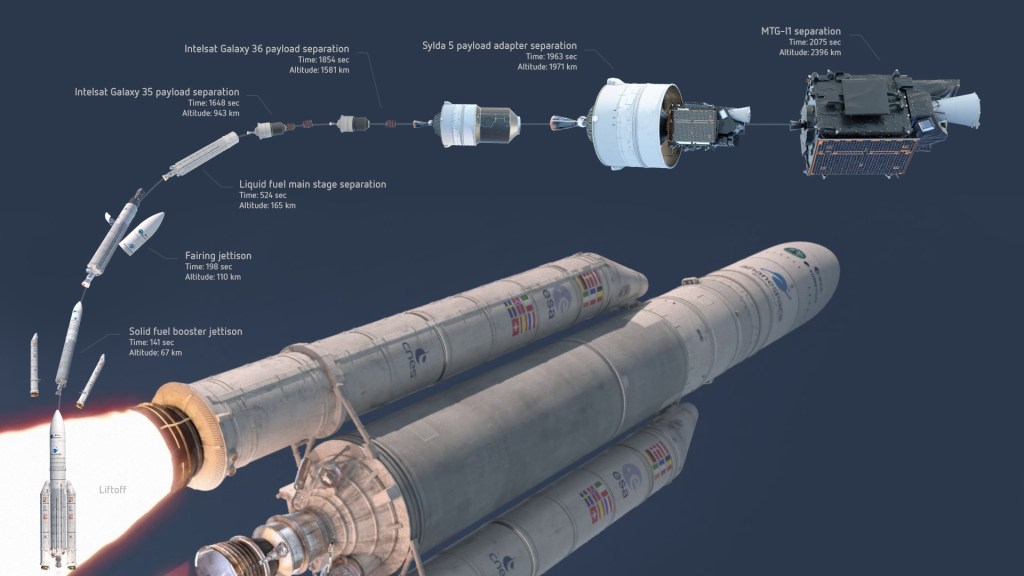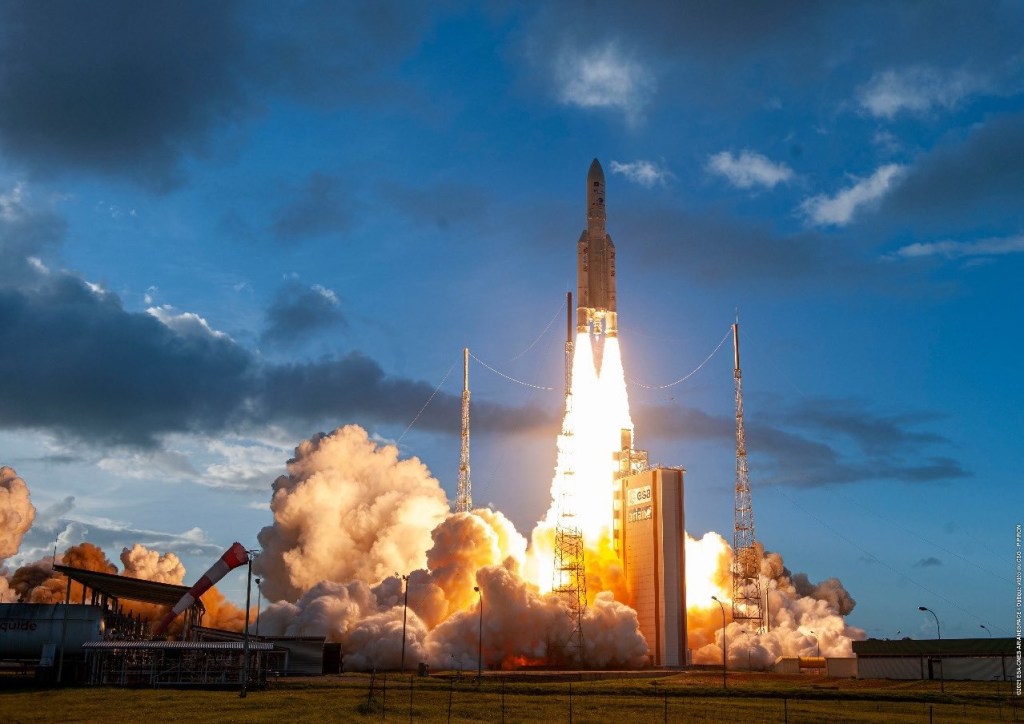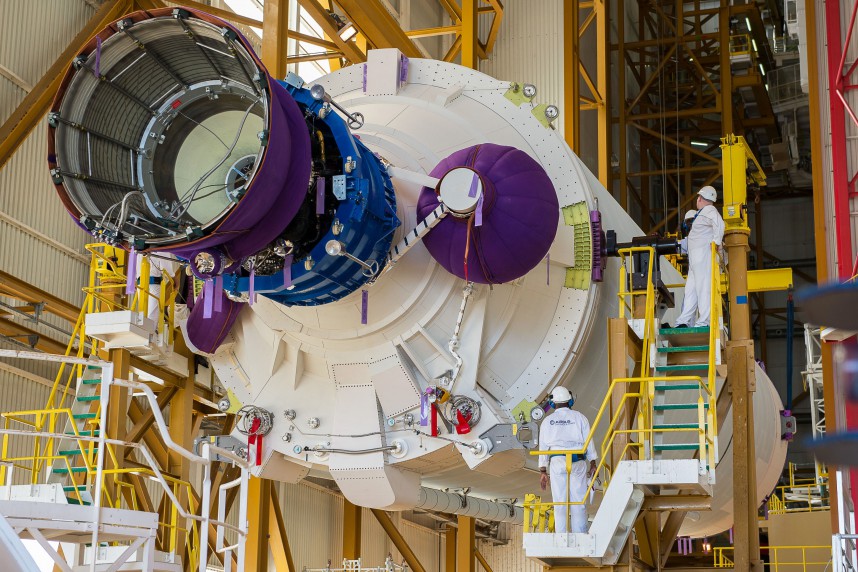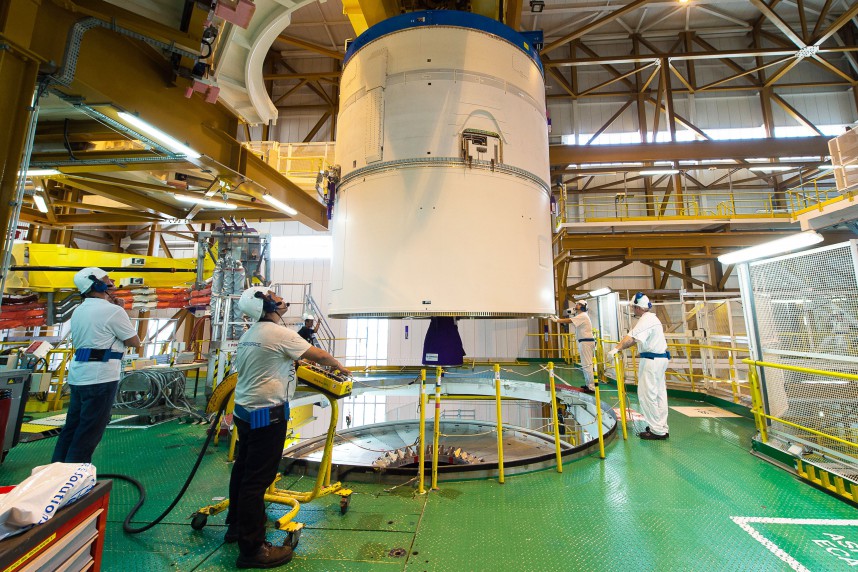Featured Image: Arianespace
Lift Off Time | 13 December, 2022 – 20:30 UTC | 17:30 GYT |
|---|---|
Mission Name | Galaxy 35 & 36, MTG-l1 |
Launch Provider | Arianespace |
Customer | EUMETSAT and Intelsat |
Rocket | Ariane 5 ECA+ |
Launch Location | ELA-3, Guiana Space Centre, French Guiana |
Payload mass | ~ 10,972 kg |
Where is the satellite going? | Geostationary Transfer Orbit |
Will they be attempting to recover the first stage? | No, this is not a capability of Arianespace |
Where will the first stage land? | It will crash into the Pacific Ocean |
Will they be attempting to recover the fairings? | No, this is not a capability of Arianespace |
Are these fairings new? | Yes |
How’s the weather looking? | TBD |
This will be the: | – 293rd Arianespace mission – 4th Arianespace mission of 2022 – 115th Ariane 5 mission – 3rd Ariane 5 mission of 2022 – 175th orbital launch attempt of 2022 |
Where to watch | Official livestream |
What’s All This Mean?
Arianespace will be launching a trio of satellites, the Galaxy 35 and 36 and the MTG-I1, atop their Ariane 5 ECA+ rocket. The Galaxy 35 and 36 satellites are two geostationary communications satellites from Intelsat, while the MTG-I1 satellite is the first in EUMETSAT’s third generation of weather satellite system. Liftoff will happen at the Guiana Space Centre in French Guiana.
Meteosat Third Generation-Imager 1
The Meteosat Third Generation Imager (MTG-I1) satellite is first in EUMETSAT’s new series of satellites that will produce 50 times more data about weather than the previous generation of EUMETSAT weather satellites. The satellite will aid meteorologists across Europe and Africa in rapid detection and forecasting severe weather events. The data collected from this will enable aircraft to avoid storms, give early flooding alerts, and monitor fires and fog.
The MTG system will be the most complex meteorological satellite system in the world and when fully operational it will give European meteorologists the ability to monitor the full life cycle of storms. The mass of the satellite at launch will be 3.76 tonnes and the satellite will be operational for 8.5 years.

Galaxy 35 and 36
The Galaxy 35 & 36 satellites are a pair of telecommunication and data connectivity satellites built by Maxar for Intelsat. The pair of satellites will provide North American links to broadcasters, which will allow them to show live events, such as sport, entertainment, and breaking news coverage. The pair of satellites will replace two previous Galaxy satellites – Galaxy 35 will replace Galaxy 3C and Galaxy 36 will replace Galaxy 28.
What Is The Ariane 5 ECA?
The Ariane 5 ECA is a European heavy-lift launch vehicle developed by Arianespace for the European Space Agency. Regarded as one of the most reliable launch vehicles in the world, the Ariane 5 has launched 109 times since 1996 with a 95.4% success rate.
The rocket flew 82 consecutive missions without failure before suffering a partial failure in January 2018. The Ariane 5 launches from the European Spaceport in French Guiana, a spaceport close to the equator, which allows the rocket to take advantage of the Earth’s greater rotation speed there and boost the launch performance.
The ECA version of the Ariane 5 is capable of launching two large satellites, one on top of the other, using an adapter known as the Système de Lancement Double Ariane (SYLDA). The adapter covers the lower satellite as it supports the higher satellite. When the time comes for satellite deployment, the top satellite is released first, the SYLDA is then jettisoned, and the bottom satellite is released last.

Boosters
Two P241 solid rocket boosters (SRBs) are attached to the sides of the rockets main stage. They are fueled with a mixture of ammonium perchlorate (AP) (68%), aluminium fuel (18%), and Hydroxyl-terminated polybutadiene (HTPB) (14%). Each booster provides about 7,080 kN (1,590,000 lbf) of thrust, burning for 130 seconds before crashing into the ocean. They are usually left to sink to the bottom of the ocean, but similarly to the Space Shuttles SRB, it is possible to recover them using parachutes. When this is done it is for post-flight analysis, and the boosters are not reusable.
Main Stage
The Ariane 5 has a cryogenic H173 main stage, called the EPC (Étage Principal Cryotechnique — Cryotechnic Main Stage), which burns for 540 seconds. It is comprised of a main tank, which is 30.5 m tall and has two compartments, one compartment for liquid hydrogen (LH2) and the other for liquid oxygen (LOx). A Vulcain 2 engine sits at the base and provides vacuum thrust of 1,390 kN (310,000 lbf).

Second Stage
The ECA has an upper stage called the ESC-A (Étage Supérieur Cryotechnique — Cryogenic Upper Stage), and uses an HM7B engine, which is fueled by liquid hydrogen (LH2) and liquid oxygen (LOx). The stage provides 67 kN (15,000 lbf) in vacuum, has an ISP of 446 seconds, and will burn for 945 seconds.





